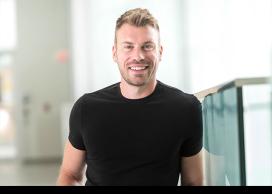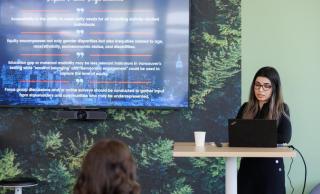Research in focus: Mark Cembrowski
Learn more about the work of our researchers at UBC

January 18, 2021
Name:
Mark Cembrowski
Title:
Assistant Professor
Department/Unit:
Department of Cellular and Physiological Sciences, Faculty of Medicine
Member of the UBC Dynamic Brain Circuits in Health and Disease Cluster
Are you Faculty or Staff?
Faculty
Location:
Vancouver
What year did you start working at UBC?
2019
Provide an overview of your research in 75 words or less:
My laboratory aims to understands how the brain forms, stores, and retrieves memories. To do this, we take a multidisciplinary, multiscale approach. We combine big data analysis and cutting-edge experimental techniques to study memory across the spatial scales of the nervous system: molecules, cells, circuits, and behaviour. With this combination, we aim to generate a comprehensive understanding of the neurobiological rules of memory in both health and disorder.
What first motivated you (or motivates you) to conduct your research?
Fear memory is at the heart of our research. We were motivated to study fear memory because it can be studied in a laboratory setting, can be induced in a single experience, and has therapeutic relevance. Due to this, the study of fear memory represents perhaps the best “case study” for understanding a type of memory in the brain.
What do you hope will change as a result of this research?
Currently, our central goal is to understand the mechanisms of fear memory. Fear memory is very powerful—at it’s core, it functions to keep us safe and alive. But such power can come with unfortunate consequences. For example, post-traumatic stress disorder (PTSD) can be completely debilitating. We are seeking to understand the neural mechanisms of fear memory in the brain, in order to identify new targets and treatments for PTSD. Our goal is to disrupt traumatic fear memory formation in a safe, acute, and after-the-fact manner.
Are there any research collaborators you’d like to acknowledge and why?
I would like to acknowledge my postdoctoral advisor Dr. Nelson Spruston and the “Quantitative Genomics” team at the Janelia Research Campus of the Howard Hughes Medical Institute. This collaboration has been central in getting an exceptionally challenging experimental technique termed “single-cell RNA sequencing" to work, and so far it has yielded absolutely outstanding data. Through our collaboration, we have been fortunate to use this technique to reveal undiscovered and critical properties of cells that mediate memory in the brain.
What have you learned during your research that has surprised you the most?
That “textbook” neuron types are not so textbook after all! Our projects examine some of the most classically studied neurons in the brain. Our initial assumptions were that such neurons should be relatively homogeneous, but careful analysis of these neurons showed that they can vary dramatically in structure and function. This is great news, as it means specific subsets of neurons could be targeted for manipulation (e.g., those that convey fear memory), while leaving the operation of other neurons intact.
- Our people
- Research
- Research in focus






